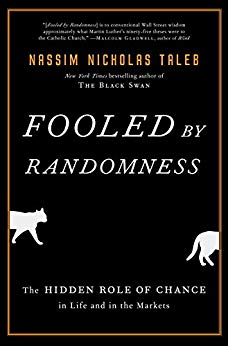In his book “Fooled by Randomness” author N.N Taleb shows the dangers of seeing patterns where there is only random noise, the danger of confusing luck with skill, and believing things can be predicted with accuracy that are simply randomly occurring.
Randomness can become especially dangerous in trading and investing in the financial markets as someone begins to ignore the inevitable risk that is always present by believing that success in the markets now is a reflection of what will continue to occur. Being fooled into thinking risk has left a market can lead to an eventual blow up when a trend ends and there is a fat tail event that happens outside the normal distribution of the bell curve.
While the skillful can be unlucky in the short term due to the random variance of the odds and the unskillful can get lucky in the short term, however in the long term with a large enough data set the reality of skill versus luck begins to become more clear by statistical performance.
You have to make the best decision based on all the information you have up to a certain point in time, hindsight is never available in real time. The better you can see what matters and what does not, the better filter you will have for randomness and the more clear you can see the real patterns that create an edge in decision making.
Both risks and rewards are embedded in randomness and creating asymmetric risk/reward ratios that are in your favor is the best way to manage an unknown future profitably. If you are wrong you lose a little and if you are right you make many times your risk.
The ability to manage randomness is one of the greatest skills a trader can possess.
“No matter how sophisticated our choices, how good we are at dominating the odds, randomness will have the last word.”
– Nassim Nicholas Taleb
